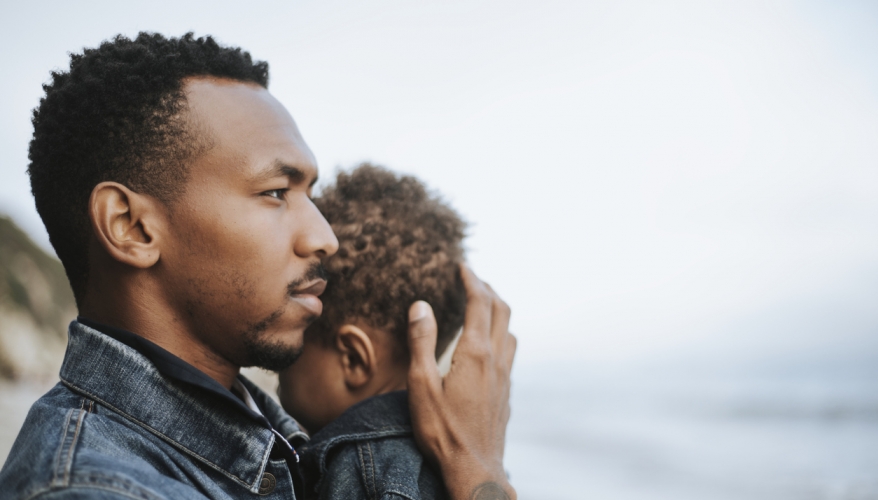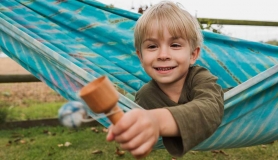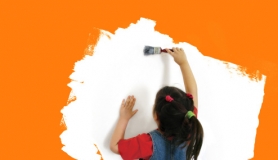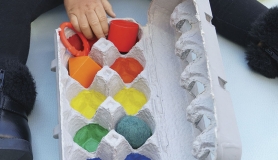What’s the most challenging aspect in your life as the parent of a toddler? I’m pretty sure tantrums will be high up on the list. Surely there isn’t really a positive side to toddler tantrums?
My journey to discovering the truth about tantrums began just before becoming a mother, when I was working as a babysitter for a five year old boy called Tom. Tom kept having tantrums over things that seemed small and petty to me; like when I didn’t have the right snack he wanted, or when he was busy playing and we needed to leave the house.
I was surprised by this sudden explosion of emotion, and wondered what I should do. From my naive perspective as an occasional babysitter I assumed that five year olds were ‘supposed’ to have grown out of tantrums.
I went home and Googled ‘what to do about tantrums,’ and found suggestions such as ‘just ignore them,’ or ‘put your child in time out.’ I was shocked at what I was reading, as intuitively it just felt wrong to punish a child for expressing emotion. I kept looking, thinking that surely there must be some compassionate advice out there.
I discovered the work of a psychologist called Aletha Solter who had a completely different perspective. She explained that crying and tantrums are a natural healing process for children; that stress, and emotional upset are released through tears.
Beneath an upset about a broken biscuit or the wrong colour cup there may be feelings that have built up from separation anxiety when starting a new daycare, getting used to the arrival of a new sibling, or even very early experiences like stress in pregnancy or a difficult birth.
STRESS RELEASE
Dr. William Frey, a biochemist looked at tears in the laboratory and found that those released because of emotional distress, (as opposed to those induced by onions) actually contained the stress hormone cortisol. So when we cry we are literally releasing stress and tension from our bodies. Crying is a way to lighten our load of emotional baggage, and make children (and adults too!) feel good again.
Most of us start off as parents, automatically trying to stop or avoid tantrums. So we distract them with an interesting toy, or try to fix the situation, by giving in to the request for the correct colour cup etc.
Parents doing this are operating with the most loving of intentions. We all want our children to be happy, and so it seems obvious, that we achieve this by stopping their tears. But actually, what we do when we distract or stop tears, is interrupt our children’s natural healing process. That means that a child stops crying, but they haven’t fully processed their upset, which means it may come out again later, either through another tantrum, or indirectly through behaviour.
“This impulse to try and stop and avoid tears, is based on our own experience of not having our own emotions heard”
This impulse to try and stop and avoid tears, is based on our own experience of not having our own emotions heard. It is something that almost all of us, (including me!) have done at some point. It’s what we learnt in our childhood, when we were told things like, ‘’don’t cry, or I’ll give you something to cry about.’’ It can be hard to handle our children’s emotions when our own big feelings weren’t met with compassion.
WELCOME EXPRESSION
My own confusion around crying led me to train to be a Hand in Hand Parenting instructor, and write a book; Tears Heal: How to listen to our children, about how we can learn to see the positive side of our toddler’s tantrums. I support parents to staylisten to their children’s tears. Staylistening is the act of simply staying close when our toddlers cry or tantrum, and listening, and empathising, without having a hidden agenda, to try and stop them from expressing themselves. It’s tough and challenging and one of the biggest parts of the job I do is to help parents deal with their own childhood ‘stuff’ which gets in the way of seeing tantrums in a positive light.
Listening to tantrums isn’t just about helping toddlers to naturally regulate their emotions to feel good. It’s about helping them with their behaviour too. Behind sharing struggles, aggression, whining, and other ‘off-track’ forms of behaviour there are almost always emotions that your toddler is trying to process. When we listen to tears, we allow children to express how they’re feeling, so those emotions don’t come out indirectly through their behaviour.
STAYING PRESENT
One day when I went back to babysit for Tom with my new knowledge about the healing power of tears. He was recovering from the flu, and got very frustrated with some LEGO he was building. It was technical LEGO for age seven and above, and he had come to a part of the instructions that he didn’t understand. I tried to help him but I was confused too. He started to cry and tantrum, and that’s when I remembered the art of staylistening. I tried to stay present in the moment, letting go of my anxiety about not being able to fix the situation. Then something amazing happened. When the tantrum finished, he sat down and finished the LEGO.
This is what letting go of hurt, and frustration does to the brain; it clears out children’s minds, so that they can think more clearly, so that they can grow in confidence and go out into the world, feeling lighter, and more able to enjoy life, and take on it’s challenges.
So next time your toddler tantrums try listening the whole way through, and watch him or her emerge into a brighter day.
MORE INSPIRAITON
READ: Tears Heal by Kate Orson
EXPLORE: handinhandparenting.org for articles on nurturing the parent-child connection







